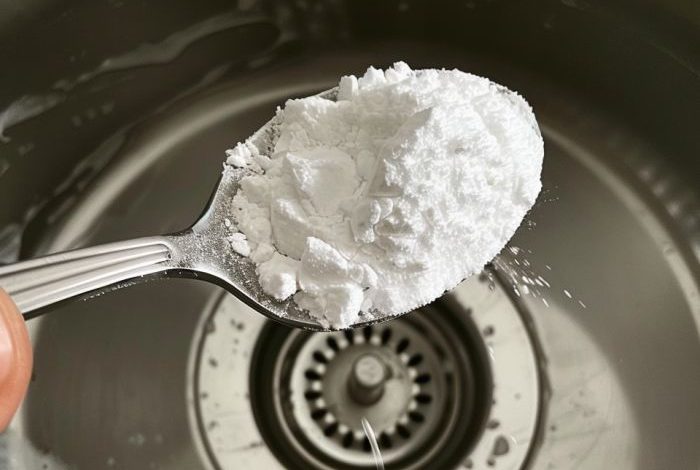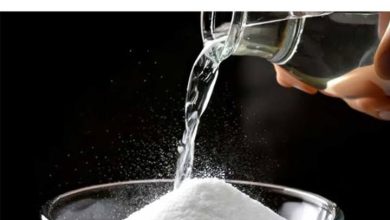Next time your sink is clogged, forget the plumber. Fix it yourself with just a few easy steps. Here’s how

A clogged sink can disrupt your daily routine, making it essential to address the issue promptly. While calling a plumber is a common solution, learning how to fix a clogged sink yourself can save you time and money. Plus, it gives you the satisfaction of solving a household problem on your own. This guide will walk you through various methods to unclog your sink, providing detailed steps and tips for each approach.
ADVERTISEMENT
Gather Your Tools
Before you begin, it’s important to gather all the necessary tools. Having everything on hand will make the process smoother and more efficient. Here’s what you’ll need:
ADVERTISEMENT
| Tool | Purpose |
|---|---|
| Plunger | To create suction and dislodge clogs |
| Drain Snake (Auger) | To break up and remove clogs |
| Baking Soda | To help dissolve clogs |
| Vinegar | To react with baking soda |
| Kettle of Boiling Water | To dissolve clogs and clear the drain |
| Bucket | To catch water when cleaning the P-trap |
| Wrench | To unscrew the P-trap |
| Rubber Gloves | For hygiene and protection |
Safety Precautions
- Wear rubber gloves to protect your hands.
- Be cautious when handling boiling water.
- Ensure proper ventilation if using chemical drain cleaners.
Boiling Water Method
The boiling water method is a simple and effective way to dissolve minor clogs. Follow these steps:
ADVERTISEMENT
- Boil a full kettle of water.
- Carefully pour the boiling water down the clogged drain.
- Wait for a few minutes to see if the water drains.
- Repeat if necessary.
When to Use This Method: This method works best for minor clogs caused by grease or soap buildup. If the clog persists, move on to more advanced techniques.
Baking Soda and Vinegar Method
Using baking soda and vinegar is a natural and effective way to clear clogs. Here’s how to do it:
- Pour about a cup of baking soda down the clogged drain.
- Follow with a cup of vinegar.
- Allow the mixture to sit for around 30 minutes.
- Pour hot water into the drain to see if it is clear.
Benefits of This Method: This method is environmentally friendly and can effectively break down clogs without harsh chemicals.
Plunging the Sink
A plunger is a handy tool for unclogging sinks. Follow these steps for effective plunging:
- Fill the sink with enough water to cover the plunger’s rubber part.
- Place the plunger over the drain opening.
- Vigorously plunge up and down several times to create suction.
- Test the drain to see if the clog is cleared.
Tips for Effective Plunging:
- Ensure a tight seal around the drain.
- Use short, quick plunges for the best results.
- Repeat as necessary.
Using a Drain Snake
A drain snake, or plumber’s auger, is useful for stubborn clogs. Here’s how to use it:
- Insert the snake into the drain.
- Push it down while turning the handle.
- When you feel resistance, you’ve hit the clog.
- Continue turning the handle to break up the clog.
- Carefully pull the snake out and run hot water to flush the drain.
What is a Drain Snake? A drain snake is a long, flexible tool that can navigate through pipes to reach and remove clogs.
Cleaning the P-Trap
If other methods fail, the clog may be in the P-trap. Follow these steps to clean it:
- Place a bucket under the P-trap to catch water.
- Use a wrench to unscrew the connections on the P-trap.
- Remove the P-trap and clean out any debris.
- Reassemble the P-trap and test the drain.
Identifying the P-Trap: The P-trap is the curved pipe under your sink, designed to trap debris and prevent it from clogging the main drain.
Preventive Measures
Preventing clogs is easier than dealing with them. Here are some tips:
- Avoid pouring grease down the drain.
- Use a sink strainer to catch food particles and debris.
- Regularly flush your drains with boiling water.
- Clean the P-trap every few months.
Regular Maintenance Tips:
- Schedule routine cleanings.
- Be mindful of what goes down your drain.
Avoiding Common Mistakes:
- Don’t use chemical drain cleaners frequently as they can damage pipes.
- Don’t ignore minor clogs as they can become major problems.
When to Call a Professional
Sometimes, professional help is necessary. Here’s when to call a plumber:
- If multiple drains are clogged.
- If you notice sewage backup.
- If your DIY efforts fail to clear the clog.
Signs You Need Professional Help:
- Persistent odors.
- Slow draining across multiple fixtures.
- Visible leaks or water damage.
Choosing the Right Plumber:
- Look for licensed and insured professionals.
- Check reviews and ask for references.




